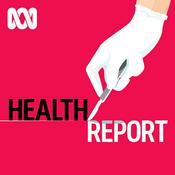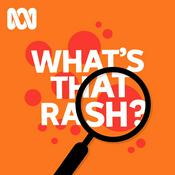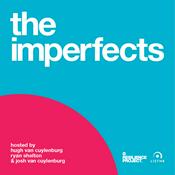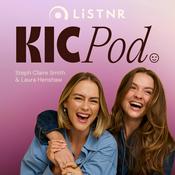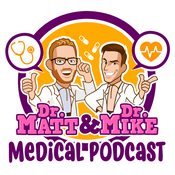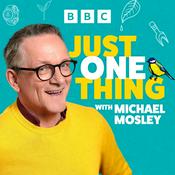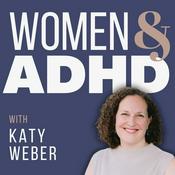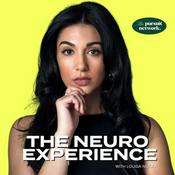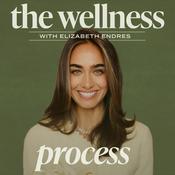272 episodes

January 2026; papers of the month
01/01/2026 | 32 mins.
Welcome to January's Papers of the Month, which marks 10 years of the podcast! First up, we look at a large multicentre cohort study from the East of England examining the association between prehospital post-intubation hypotension and mortality in severe traumatic brain injury. Preventing secondary brain injury sits at the centre of what we're try to achieve in early TBI care, but this paper quantifies the impact of post-RSI hypotension in a dramatic way and the associated increase in 30-day mortality. Our second paper moves into the world of stable supraventricular tachycardia, asking whether an elevated troponin level in this cohort predicts short-term cardiovascular events. Troponin testing in SVT is common but debated: is it useful, or is it a diagnostic red herring? Finally, we look at BICARICU-2, a major multicentre RCT examining sodium bicarbonate for severe metabolic acidemia in patients with moderate–severe AKI. We explore what this means for bicarbonate use for this group of patient, both in terms of mortality rates and the need for renal replacement therapy. Once again we'd love to hear any thoughts or feedback either on the website or via X @TheResusRoom! Simon & Rob

The Wider World of Pre-hospital Care; Roadside to Resus
11/12/2025 | 31 mins.
Welcome to this special edition of Roadside to Resus where we're diving into some of the progressive and practice-defining developments in pre-hospital emergency care. This episode brings together a superb group of clinicians, educators and leaders who are shaping the future of PHEM across the UK, and we caught up with them at the recent Faculty of Pre-hospital Care Conference entitled 'The Wider World of Pre-hospital Care'! We start with Pam Hardy, the Chair of the FPHC, who offers an introduction to the College and its ongoing work to elevate standards across pre-hospital care. Next, Camella Main guides us through the brand-new Pre-hospital Maternity Decision Tool designed to support clinicians facing complex decision making in this complex group of patients. Camella breaks down how the tool came to fruition and how teams can use it to enhance safety and decision-making on scene. We then hear from Ben Sheppey, who explores the growing move to formalise and professionalise voluntary pre-hospital care. Ben reflects on the challenges, opportunities and cultural shifts required to align voluntary responders with national standards. Harriet Tucker then walks us through the new FPHC consensus statement on managing penetrating neck injuries. She distils the key principles, the recommendations, and how the guidance aims to bring clarity to one of the most complex and time-critical presentations we face. From there, Cosmo Scurr unpacks the latest AAGBI PHEA Guideline, highlighting the key movements in delivering anaesthesia in the pre-hospital environment. We also hear from Felix Wood, who provides a sharp, practical look at crush injury and crush syndrome. Finally, Zane Perkins explores the rapidly advancing world of AI in PHEM. From practical application to decision making support. Zane describes how emerging technologies have the potential to change prehospital care in ways we may have never considered before! A huge thanks to the expert speakers for their time recording highlights from the superb conference. Once again we'd love to hear any thoughts or feedback either on the website or via X @TheResusRoom! Simon, Rob & James

December 2025; papers of the month
01/12/2025 | 30 mins.
December brings us to the final Papers of the Month for 2025 and we're finishing the year with three studies that challenge assumptions across critical care and resuscitation! This time questioning the role of arterial lines in shock, looking at the true prognostic value of end-tidal CO₂ in cardiac arrest and finally to airway management in neonates. We start in the ICU with the EVERDAC trial, a large multicentre RCT exploring whether early arterial catheterisation in shock truly changes outcomes. This challenges some of the papers we've recently looked at recently which champion the benefit of early arterial line insertion! The EVERDAC trial looks at the effect they have on mortality and the results are pretty striking. Next, we move into the world of cardiac arrest with a systematic review and meta-analysis examining end-tidal CO₂ as a prognostic tool for ROSC. ETCO₂ is firmly embedded in ALS practice, but its real predictive power isn't completely clear, as we've seen in the recent ERC guidelines. This review pulls together studies with more than 3,000 patients and helps us understand more how much weight we should give to ETCO₂ and the way in which it's best utilised. Finally, we finish with a neonatal focus: a systematic review and meta-analysis comparing video versus direct laryngoscopy for urgent neonatal intubation. Success rates in NICU and delivery room intubation are notoriously low. This paper looks at the impact of video laryngoscopy on first pass success with some dramatic results, which raises important questions around training and resource allocation. Three papers, three very different patient groups, and three opportunities to reflect on how evidence continues to challenge our practice. Once again we'd love to hear any thoughts or feedback either on the website or via X @TheResusRoom! Simon & Rob

Resuscitation Guidelines 2025; Roadside to Resus
10/11/2025 | 56 mins.
Whether you're just stepping into your first cardiac arrest or you've been running them since the days of paddles, this one's for you. The 2025 resuscitation guidelines have landed after further collaboration between ILCOR, the ERC and the Resuscitation Council UK and in this episode we break down exactly what's new, what's stayed the same, and how it all fits into day-to-day practice. Across the board the 2025 updates represent evolution, a steady refinement of evidence rather than wholesale change. Adult ALS remains rooted in early recognition, high-quality compressions and rapid defibrillation, but you'll notice sharper guidance around ventilation, pad positioning, and the sequence of vascular access and drugs. There's a new section on physiology-guided CPR and the emerging science behind arterial-line-driven resuscitation as we covered in the SPEAR epsiode. We also take a look at the special circumstances algorithms from hypothermia to traumatic and obstetric arrest and discuss how an emphasis on reversible causes, data-driven debriefing and system performance might reshape post-event learning. Paediatric and newborn life support see subtle but important refinements too, including pad placement, shock energy escalation, simplification of adrenaline timings and a new Out-of-Hospital Newborn Life Support algorithm aimed squarely at the pre-hospital world. All this and more in the episode! Once again we'd love to hear any thoughts or feedback either on the website or via X @TheResusRoom! Simon, Rob & James

November 2025; papers of the month
01/11/2025 | 33 mins.
This month we've got four cracking UK-led studies that really speak to how pre-hospital and emergency medicine continue to evolve, not just in the kit and skills we use, but in how we think about the whole patient journey. We'll start with a paper fromAnaesthesia with Pallavicini et al., exploring pre-hospital central venous access for patients in haemorrhagic shock. Drawing on London's Air Ambulance experience, it shows that large-bore central catheters can be placed safely and effectively, delivering earlier transfusion and improved survival to ED arrival. It's high-stakes medicine in extreme circumstances, and this study gives some of the best real-world data we've seen on it. Next up we look at the impact of a paper that's genuinely changed national practice from Aljanoubi et al. in Resuscitation, looking at what happened after the AIRWAYS-2 trial landed. You'll remember AIRWAYS-2 showed no functional benefit of tracheal intubation over supraglottic airways in OHCA, but did it actually shift behaviour? This registry study of over 70,000 patients shows that it did - and dramatically. The rate of pre-hospital intubation has fallen from around 44 percent in 2014 to 14 percent by 2020, with a clear inflection right after the trial's publication. Real-world proof that evidence can truly change practice. Then, we turn to two linked Delphi consensus studies from Tim Nutbeam and colleagues, published in the Scandinavian Journal of Trauma, Resuscitation and Emergency Medicine. The first, optimising the care of the trapped patient, develops expert-endorsed principles for managing physically trapped casualties, marking a real shift from "movement-minimisation" to time-sensitive, patient-centred extrication. The second, prioritising time-critical injuries and interventions, complements that work by defining which injuries and treatments truly can't wait — creating a shared language for multi-agency teams at the roadside. Together, these papers show how thoughtful, collaborative UK research is shaping the next generation of trauma and resuscitation care — evidence, consensus, and practice all pulling in the same direction. These latter two papers are from the team at IMPACT; The Centre for Post-Collision Research, Innovation & Translation. We've been lucky enough to collaborate with the team and deliver an online Extrication course which is now available! A bit about the course; Target audience: Fire and Rescue Service personnel, Police officers, community response scheme members, and clinicians who respond to collisions or who wish to update their awareness of consensus extrication guidance. Aims: To improve awareness and adoption of evidence-based, patient-focused extrication principles among operational responders by providing a concise, accessible, and practical educational resource that bridges consensus guidance and real-world operational practice.Learning outcomes: The course will enable participants to: Describe the evidence base underpinning contemporary extrication practice. Apply a patient-focused approach to decision-making during extrication. Employ endorsed decision support tools, including EXIT decision aids, to case-based scenarios. Recognise and challenge outdated or unsafe norms in extrication practice. To find out more about the course head over to Post-Collision Once again we'd love to hear any thoughts or feedback either on the website or via X @TheResusRoom! Simon & Rob
More Health & Wellness podcasts
Trending Health & Wellness podcasts
About The Resus Room
Listen to The Resus Room, Nothing much happens: bedtime stories to help you sleep and many other podcasts from around the world with the radio.net app

Get the free radio.net app
- Stations and podcasts to bookmark
- Stream via Wi-Fi or Bluetooth
- Supports Carplay & Android Auto
- Many other app features
Get the free radio.net app
- Stations and podcasts to bookmark
- Stream via Wi-Fi or Bluetooth
- Supports Carplay & Android Auto
- Many other app features


The Resus Room
download the app,
start listening.


